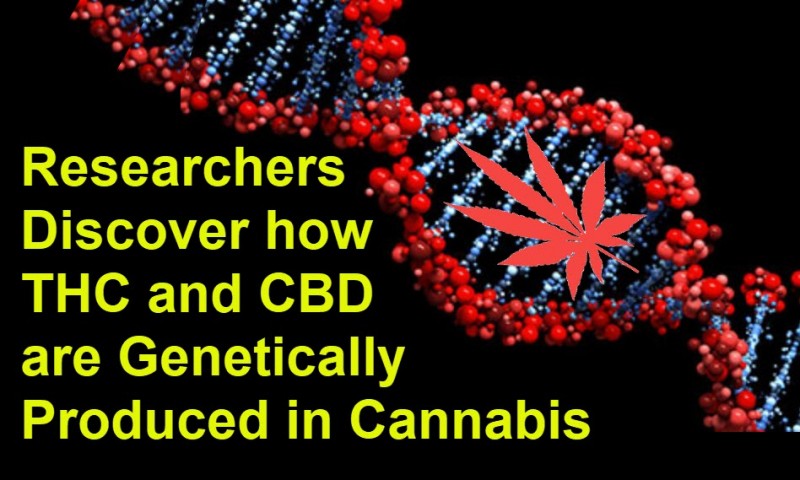For The First Time, Researchers Discover How THC And CBD Is Genetically Produced In Cannabis

It wasn’t until the 1960’s when Dr. Raphael Mechoulam, also known as the Father of Cannabis, made major breakthroughs by first discovering and isolating the cannabidiol (CBD) and tetrahydrocannabinol (THC) compounds in the cannabis plant. It also wasn’t until 2011 when scientists first successfully mapped out its genome, made up of 10 chromosomes, which was done in order to separate the DNA within the cannabis plant to gain a deeper understanding of its medicinal benefits.
A brand-new breakthrough has been accomplished by American and Canadian researchers, in a study which was published in the journal Genome Research. The scientists finally identified the very genes responsible for the production of THC and CBD. Due to an abundance of “junk DNA” within the cannabis plant, it took scientists a long time to identify these genes earlier. Junk DNA refers to genetic material that has been accumulated in cannabis due to viruses as it underwent evolution, and it’s estimated that around 70-75% of cannabis DNA as well as hemp DNA is made up from viruses. This is not uncommon in DNA of living material, including humans.
“You can only manipulate a gene when you know where it is located,” says one of the study’s authors, Harm van Bakel, also a genome expert at the Icahn School of Medicine at New York’s Mount Sinai. “And you also need to know something about the rest of the sequencing in the genome so that you can uniquely target the gene of interest and not be sidetracked by… other things that look similar,” Bakel disclosed to the Toronto Star.
Tim Hughes, a molecular geneticist from the University of Toronto’s Donnelly Centre for Cellular and Biomolecular Research, explains that the viral DNA discovered in the cannabis plant may have actually played a role in producing the THC and CBD. Random genetic relocations which resulted in the creation of active CBD and THC in an otherwise inert plant wouldn’t have happened if cannabis didn’t in fact have the viral DNA, he explains. Cellular processes which would usually keep the genetic order intact can be changed up due to the long, recurrent sequences involving viral DNA and as a result, instead of keeping the genes in their original form, these flawed mechanisms instead rearranged its sequences to create the genetic arrangements that we know of today. The processes that are “normally responsible for keeping things tidy and organized gets confused when it sees multiple copies of the same thing, and it makes mistakes,” Hughes explains. “That is almost certainly what has happened,” in the case of THC and CBD.
The fact that cannabis has been illegal federally has also posed a serious challenge for researchers who tried to identify these genes earlier. “Until the last couple of years its been extremely difficult to work with it legally,” Hughes explains. “The repercussions of being caught with a huge number of marijuana strains in order to do genetic experiments…. Nobody would risk that.”
According to van Bakel, the fact that Canada legalized cannabis for recreational purposes last October 17 will put the country at the forefront of cannabis research. However, he says that locating the THC and CBD genes within the 6th chromosome was expedited thanks to the advancements in gene scanning technology. The latest scanners have the ability to analyze tens of thousands of genetic base pairs that encompass the DNA molecule, while older technology could only do a hundred at a time. This is important because even though we have a fairly good idea of how THC and CBD work in the human body, though much more research is needed, scientists still don’t know which genes contribute to the production of these cannabinoids within the plant, says Hughes.
He also adds that current research efforts will likely place an emphasis on finding the genes that develop components which are responsible for the various smells and tastes found in different strains of cannabis.
Additionally, more projects are in the pipeline, which are taking place in Israel, Australia, and Europe thanks to joint ventures with Canadian cannabis companies. Legalization in the Great White North has clearly paved the path for more scientific research, and Canada is now “the de facto source of research-grade cannabis around the world,” says Tilray head of research Philippe Lucas.
OTHER STORIES YOU MAY ENJOY...
CANNABIS GENETICS AND HOW IF AFFECTS YOU, CLICK HERE.
OR...
CANNABIS DNA TRACKING BY THE FEDS, CLICK HERE.









